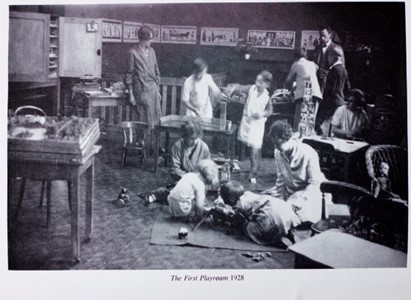Happy Birthday, Margaret Lowenfeld!
Linda E. Homeyer
Editor’s Commentary

February is a special month for sand therapy therapists. February bookends the life and death of Margaret Lowenfeld (February 4, 1890 – February 2, 1973). All our models, approaches, and uses of sand therapy find their way back to her. Based on many of her own life and professional experiences, Dr. Lowenfeld began with curiosity about finding a way for children to share their worlds to facilitate emotional and psychological health. Much like Eliana Gil, in her article in this issue, Dr. Lowenfeld sought to find entry points to understand clients
Dr. Lowenfeld was also a researcher. While participating in a research project, she realized the adult verbal approaches she was instructed to use were inadequate to obtain meaningful responses from the children in the study (Urwin & Hood-Williams, 1988). This, along with her increasing desire to help traumatized children such as those she observed in war-recovering Poland, and other experiences, led to the zeitgeist of opening her children’s clinic in London. As a part of this work, she developed the World Technique as one of several options for children to use in her play therapy rooms. Interestingly, the subjects of the first published play therapy research by Edith Dukes (1938) were all clients at Lowenfeld’s clinic.
After Dr. Lowenfeld’s trip to the United States, she remarked on the many adaptations of her original World Technique. She states,
During the last six weeks of my stay in the United States, I have had occasion to meet and hear about certain uses to which part of my world apparatus is being put as a test for traits of temperament and personality which diverge so widely from the uses for which this equipment was devised that they cause me considerable anxiety. It is not that I disapprove of batteries or tests or have any desire to restrict the use of any material that I have devised, but that I am anxious that my whole research and therapeutic method, of which this equipment is a part, should not be misunderstood or distorted when part of the equipment is borrowed and adapted to a different purpose. (Lowenfeld, 1950)
So, while we celebrate our rich and diverse use of the equipment of sand, tray, small toys, and other materials (Lowenfeld, 1950), let’s also remember her caution as well, not to misunderstand or distort our use of sand therapy.
As I reflect on our many diverse applications of sand therapy and even use the term ‘sand therapy,’ I want to acknowledge Dee Preston-Dillon, who first used that term (2008). She has long been a proponent of developing a consistent and clear nomenclature of sand therapy terms. I acknowledge her decades of work! (Watch for a coming article from Dr. Preston-Dillon.)
This month also celebrates International Play Therapy Week (February 6-11). We join with our colleagues who use sand therapy in their play therapy work in celebrating play therapy for all ages, everywhere! Explore the International Consortium of Play Therapy Associations website for international activities during this special week.
References
Dukes, E. (1938). Play-therapy for ‘problem’ children. The British Medical Journal, 2(4047), 213-215.
Lowenfeld, M. (1950). The nature and use of the Lowenfeld World technique in work with children and adults. Lowenfeld Trust.
Preston-Dillon, D. (2008). Sand therapies: Sandplay and sandtray. Mining Report. Association for Play Therapy.
Urwin, C., & Hood-Williams, J. (1988). Child Psychotherapy, war and the normal child: Selected papers of Margaret Lowenfeld. Sussex Academic Press.
Resources
The Dr Margaret Lowenfeld Trust - Child psychotherapy
Special Thanks to the Dr. Margaret Lowenfeld Trust for permission to reproduce the photograph.
© World Association of Sand Therapy Professionals, World Journal for Sand Therapy Practice, Volume 1, Number 2